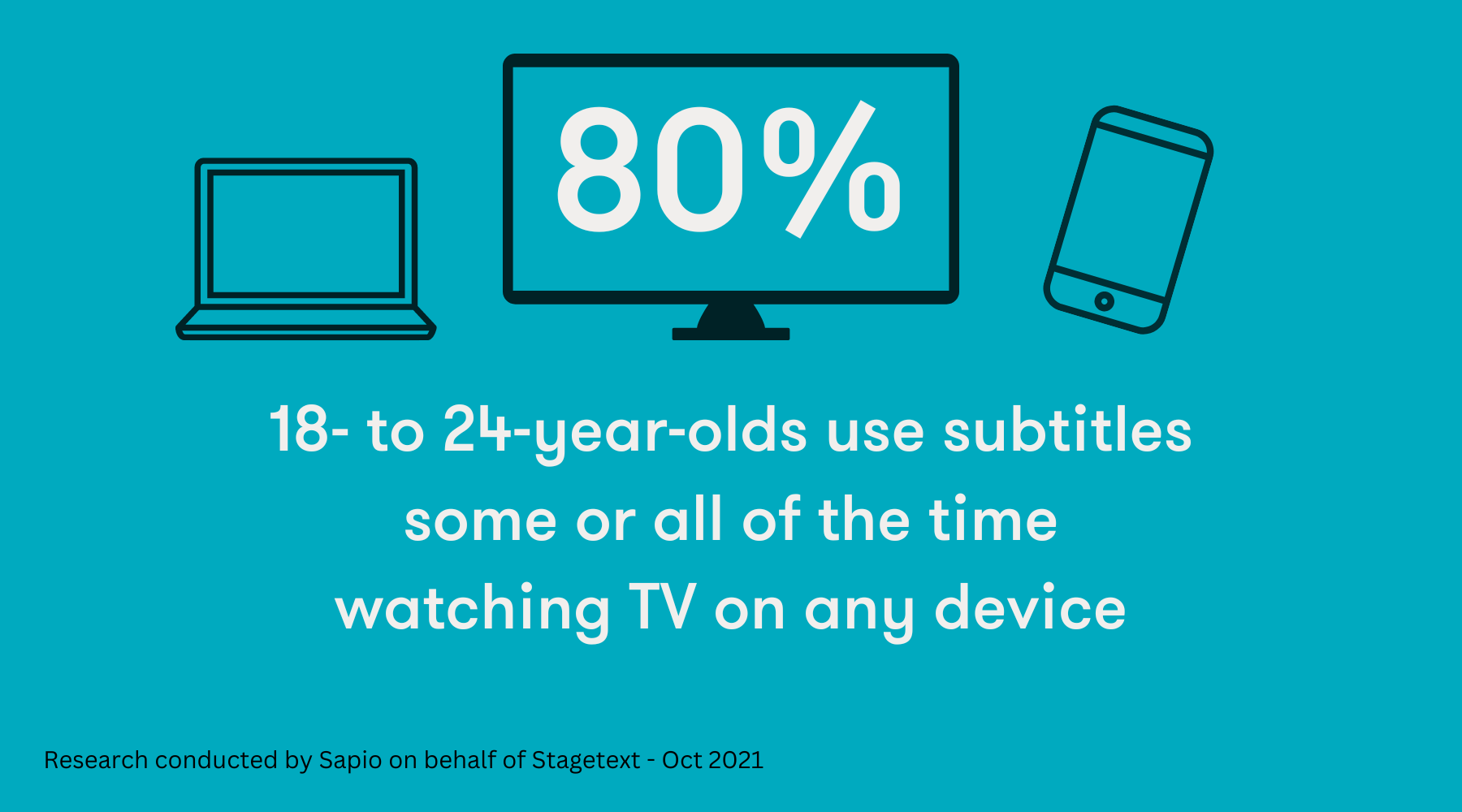A survey Stagetext commissioned in 2021 found that 80% of 18- to 24-year-olds ‘use subtitles some or all of the time watching TV on any device’. These findings have been reinforced by a recent YouGov poll, which asked ‘When watching TV shows or movies in your native language, do you generally prefer to have the subtitles on or off?’. The result was 61% of 18- to 24-year-olds said they had ‘subtitles on’. Although the two surveys had varying sample sizes and questions, in both cases this age group came out top for using subtitles.
We know that 1 in 5 people are deaf, deafened or hard of hearing, so it is certain that for both surveys, some of the young people questioned will be using subtitles for access. In the case of Stagetext’s survey, 10% of the 80% of 18- to 24-year-olds told us that they were deaf, deafened or hard of hearing.
We asked Libby, a deaf 23-year-old, about her TV viewing habits. ‘I watch TV on my phone or laptop, and I can’t watch anything without subtitles, end of. On-demand subscription can be tricky, as you can’t always tell if subtitles are available until you have paid for it. The subtitles tend to be delayed on live TV and they come up in a rhythm that is not comfortable to read.’
Melanie Sharpe, Stagetext’s Chief Executive, comments; ‘For over twenty years, deaf, deafened and hard of hearing audiences have told Stagetext they need accurate, high quality subtitles. It is clear from both surveys that young people are using subtitles, and production companies need to make it standard practice to include them. Young people’s love of subtitles will help to make subtitles the norm and we hope this will raise awareness of the importance of including them, which can only be a good thing for everyone.’
It is interesting to explore why young people are adopting subtitles, especially when we know that the largest proportion of the deaf, deafened and hard of hearing population are in older age groups. In fact, The Office for National Statistics population data 2018 reported that more than 40% of over 50 year-olds have hearing loss, rising to more than 70% of people over the age of 70. However, it seems that it is young people who are the biggest group to embrace their use in an everyday setting. Why is this?
According to Ofcom’s Media Nations report 2022, nine in ten 18- to 24-year-olds are bypassing TV channels when looking for something to watch. Of this age group, 57% are turning to Subscription Video on Demand services first, with Netflix being the most common destination. So, perhaps young adults are choosing on-demand services that can be watched on a variety of devices and that may have subtitles more readily available.
Videos on demand, on channels like Netflix, give viewers a choice of when and how to watch the content, for example, watching something on a mobile on a busy train, with the subtitles allowing them to watch the content without using headphones or disturbing the other passengers.
It’s clear that the way in which young people consume TV is different to older groups and perhaps it is the availability of subtitles on the on-demand services that gives young adults greater flexibility to watch content at any time and in any setting.
There is also strong evidence to show that subtitles improve literacy as well as aiding concentration for some neurodivergent people. So, there could be multiple reasons for this age group using subtitles.
Melanie Sharpe adds a final note for anyone wanting to include subtitles in their work, ‘It is vital that you use high quality subtitles, that are accurate, in time, contain all the elements to support deaf access and offer a quality experience. Anything less and your audience may just switch off’.




